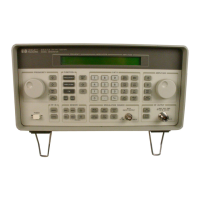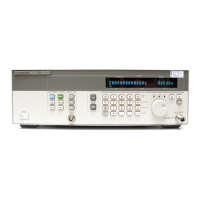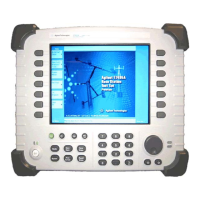1-37
Installing the 86100C
Electrical Connections
Electrical Connections
W A R N I N G If flammable fluids are used to clean connectors, the fluid shall not be placed on the
instrument during, use or when connected to mains voltage. Cleaning the
connectors shall take place in ventilated area to allow fluid vapors to dissipate, and
reduce the risk of fire.
CAUTION The input circuits can be damaged by electrostatic discharge (ESD). Therefore, avoid applying
static discharges to the front-panel input and trigger connectors. Before connecting any
coaxial cable to the connectors, momentarily short the center and outer conductors of the
cable together. Avoid touching the front-panel input connectors without first touching the
frame of the instrument. Be sure the instrument is properly earth-grounded to prevent buildup
of static charge.
CAUTION Electrostatic discharge (ESD) can damage or destroy electronic components. Coaxial cables
with both ends unconnected may store electrostatic charges. Before connecting any coaxial
cable of this sort to a device or instrument, momentarily short the center and outer conductors
of the cable. When making connections, ensure the proper use of a grounded, resistor-isolated
wrist strap.
Advances in measurement capabilities make connectors and connection tech-
niques more important than ever. Observing simple precautions can ensure
accurate and reliable measurements.
Handling and storage • Keep connectors clean
• Extend sleeve or connector nut
• Use plastic endcaps during storage
• Do not touch mating plane surfaces
• Do not set connectors contact-end down
Visual inspection • Inspect all connectors carefully before every connection
• Look for metal particles, scratches, and dents
• Do not use damaged connectors
Cleaning • Clean with compressed air first
• Clean the connector threads
• Do not use abrasives
• Do not get liquid onto the plastic support beads
Making connections • Align connectors carefully
• Make preliminary connection lightly

